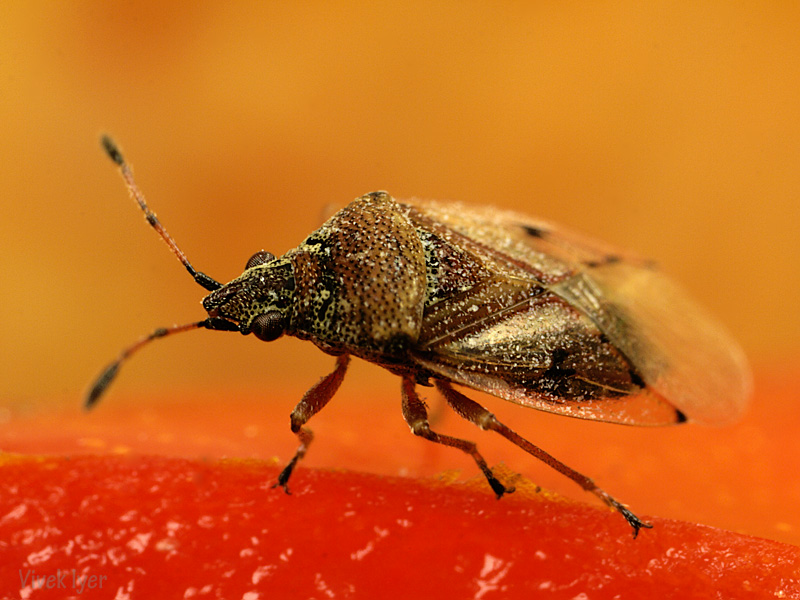V
Vivek
Guest
There have been a few threads recently. One of my interests is macro photography (ie 1x or greater magnifications). An year ago, I posted some shots with a Leitz Milar 10cm lens on G1.
Extension tubes, focus mounts from salvaged lenses, bellows, anything and everything is used in my set-up.
Lighting and stability (camera set-up as well as specimens) is a major issue.
The intention is to share an image or two and to exchange any tips and tricks from everyone. So, post anything (images) you have got at or above 1X.
Here is a recent capture of a live tick @ 8X. The insect was <2mm in length and was cleaning its legs while sitting on a piece of fruit. It was lit up by two fluorescent lamps. An ancient Leitz Summar 24mm f/2 on extension tubes mounted on a G1 was the imaging system. The camera was on a focus rail which was supported on a tripod (ISO100, 1/100s, cable release, ~f11).

The set-up was not all that stable as I would have liked (something similar to an Aristophot set-up is available to me but that behometh was elsewhere.)
Next time, the tripod would stand on concrete (and not wooden) floors.
Extension tubes, focus mounts from salvaged lenses, bellows, anything and everything is used in my set-up.
Lighting and stability (camera set-up as well as specimens) is a major issue.
The intention is to share an image or two and to exchange any tips and tricks from everyone. So, post anything (images) you have got at or above 1X.
Here is a recent capture of a live tick @ 8X. The insect was <2mm in length and was cleaning its legs while sitting on a piece of fruit. It was lit up by two fluorescent lamps. An ancient Leitz Summar 24mm f/2 on extension tubes mounted on a G1 was the imaging system. The camera was on a focus rail which was supported on a tripod (ISO100, 1/100s, cable release, ~f11).

The set-up was not all that stable as I would have liked (something similar to an Aristophot set-up is available to me but that behometh was elsewhere.)
Next time, the tripod would stand on concrete (and not wooden) floors.










